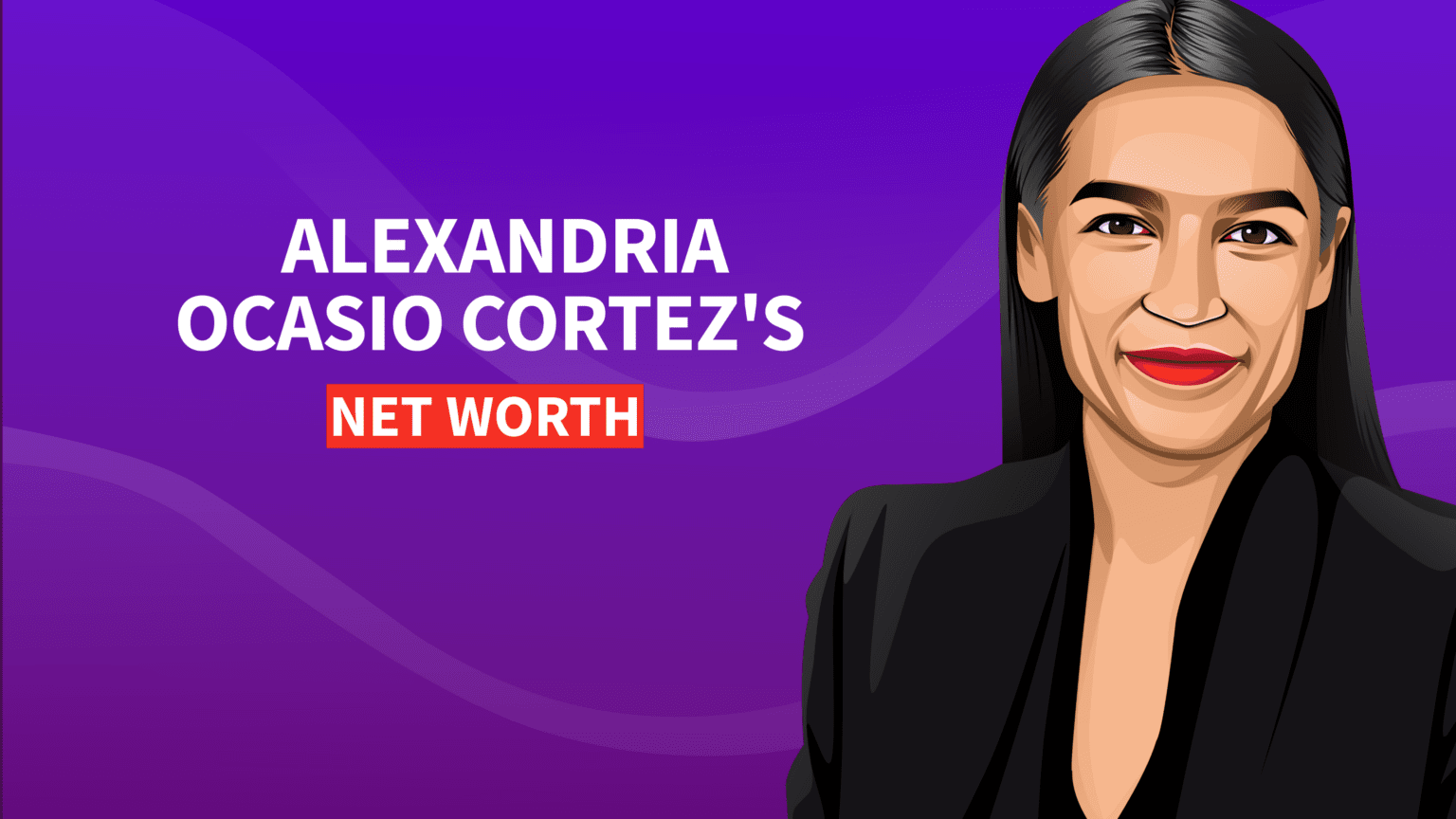Is it possible to accurately gauge the financial standing of a public figure, especially when navigating the complex world of politics? The truth often lies beneath the surface of sensational headlines and viral rumors, requiring a deep dive into financial disclosures and a critical examination of the narratives surrounding wealth.
The focus here is on Alexandria Ocasio-Cortez, or AOC, a prominent figure in contemporary American politics. The question of her net worth frequently surfaces in discussions about her public image and political stance. Several factors influence this calculation, including her congressional salary, any previous earnings, and potential investments. It's a multifaceted assessment, complicated by the need to separate fact from fiction in a media landscape rife with misinformation.
| Category | Details |
|---|---|
| Full Name | Alexandria Ocasio-Cortez |
| Date of Birth | October 13, 1989 |
| Place of Birth | The Bronx, New York City, New York, U.S. |
| Education | Boston University (B.A. in Economics and International Relations) |
| Political Party | Democratic |
| Current Position | U.S. Representative for New York's 14th congressional district |
| Years in Office | Since 2019 |
| Congressional Salary (approx.) | $174,000 per year |
| Reported Net Worth (as of 2023) | Around $1 million |
| Assets | Less than $60,000 (as per financial disclosures) |
| Liabilities | Up to $50,000 in student loan debt (as per financial disclosures) |
| Previous Occupation | Bartender, Educator |
| Notable Policies | Green New Deal, Medicare for All |
| Reference | House of Representatives Website |
AOC's journey in politics began in 2018 when she was elected as a member of the United States Congress. This marked a significant shift in her career, moving her from a background that included bartending and educational roles into the national spotlight. Her campaign and subsequent actions have often highlighted issues of economic disparity and social justice, themes that frequently surface in discussions about her personal finances. Her ability to connect with younger voters, often through social media, has also contributed to her visibility.
Her annual congressional salary of approximately $174,000 forms the foundation of her income. This figure, though substantial, is only one piece of the puzzle when trying to establish her net worth. Furthermore, the scrutiny of her financial situation is intensified when contrasted with some of her congressional colleagues, notably figures like Nancy Pelosi, whose wealth is significantly higher due to investments in various assets, including real estate. These differences underscore the variety in financial standings within the House of Representatives, making the comparison crucial in understanding the full financial context.
Public records provide more insight. Financial reports for AOC for the years 2021, 2022, and 2023 are available on the House of Representatives website. These disclosures are essential for the public to scrutinize her financial situation, ensuring transparency and accountability. These documents are more reliable than information from websites like "celebrity net worth," which often have less rigorous standards. Analyzing these official filings sheds light on her assets, debts, and financial activities, allowing for a more grounded evaluation of her wealth.
The claim that AOC has amassed a fortune of $29 million since assuming office is a key example of misinformation. Such claims are often spread on social media platforms, particularly Facebook, and lack any factual basis. Snopes and other fact-checking websites have debunked these rumors, highlighting the importance of verifying information before sharing it. The contrast between this inflated figure and the reality of her financial disclosures illustrates the importance of critical thinking when dealing with public figures' finances.
AOC's financial disclosures show that she has at most $60,000 in assets and up to $50,000 in student loan debt. This profile contrasts sharply with the image sometimes portrayed. Her modest net worth could be interpreted as a reflection of her commitment to public service, as opposed to a focus on personal wealth accumulation. Many members of Congress have net worths exceeding $1 million, making her financial standing relatively modest in comparison. This has led to discussions on whether her income level is sufficient for her to live in the style expected of a congressperson. Some of her social media posts have addressed this gap, where she has publicly announced when she was newly insured.
The influence of social media in disseminating information, both accurate and false, cannot be understated. AOC, a highly active user on platforms like Twitter (now X), uses her accounts to engage with the public and explain her positions. This makes her the third most popular U.S. politician on the platform, following Barack Obama and Donald Trump. Her financial situation has been discussed on social media, with claims that she makes $1.6 million every year from investments and various businesses. These claims, like others, require verification.
Her main bank account, at Wells Fargo, reportedly contains $250,000. This information needs verification, as the specifics of bank accounts are usually not detailed in public financial disclosures. However, financial disclosures provide an overview, including assets, debts, and potential sources of income, which help in making more informed assessments. Understanding her financial standing allows for a better assessment of the choices she makes and the policies she supports. Moreover, it illustrates the differences in wealth that exist in congress, where averages show the median net worth of U.S. Congress members is over $1.1 million.
In contrast to politicians like AOC, consider the case of Kris Bryant, a baseball player. When tracking his net worth in 2020, he was estimated to be worth $8 million. At that time, he had already earned about $32.6 million from salary and bonuses. Subsequent earnings added at least $104 million, which significantly increased his net worth to an estimated $50 million. This illustrates the potential for financial growth in the professional sports sector, in contrast to the relatively fixed salary structure of a Congressperson.
The narrative around AOC's financial situation also involves addressing negative comments and criticisms. Her response has often been to transparently communicate her circumstances, such as sharing publicly that she had newly acquired insurance. This approach could be seen as an effort to maintain a relatable image and counter narratives that attempt to portray her as out of touch with the financial realities of ordinary Americans. Its a direct response to any perception that she may be disconnected from her constituents needs.
The context of her financial situation also plays a crucial part in her political messaging. For example, when discussing the financial implications of the Green New Deal or Medicare for All, her net worth is relevant to these discussions. She often advocates for policies that redistribute wealth and provide more significant financial support to underserved communities. Her personal finances, therefore, serve as a backdrop to her policy views, reinforcing the contrast between the reality of her finances and the public perception of her wealth.
In evaluating her net worth, it's essential to differentiate between the sources of information. Websites like "celebrity net worth" and social media posts often lack the rigorous fact-checking and are not the best sources of data. Instead, referencing her official financial disclosures and using reliable sources is crucial. This approach helps prevent the spread of misinformation and ensures accuracy in understanding her financial situation. It underscores the value of relying on substantiated facts and verified information when analyzing the financial details of public figures.
The perception of AOC's wealth also plays a role in the way she is portrayed by the media. Some reports may emphasize her modest net worth as a point of relatability with ordinary Americans, while others may use it to criticize her for not being financially successful. It demonstrates how the portrayal of her financial situation can be strategically used to influence public opinion. It is therefore essential to review these portrayals critically and seek information from a variety of reliable sources.
In conclusion, accurately assessing AOC's net worth requires navigating a landscape of accurate disclosures and unsubstantiated rumors. The official financial disclosures, coupled with her congressional salary, provide the most reliable information. Her modest net worth, when compared to some of her colleagues, may underscore her commitment to public service. The continual scrutiny of public figures and how the media represents their finances emphasizes the importance of financial transparency and the need for critical media literacy.


